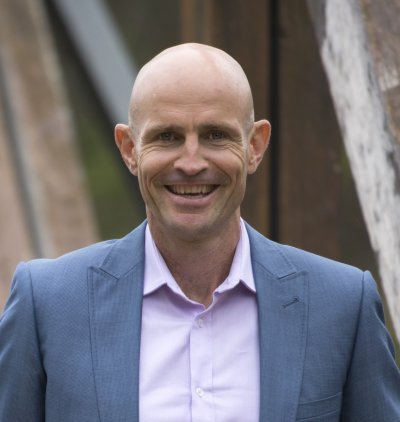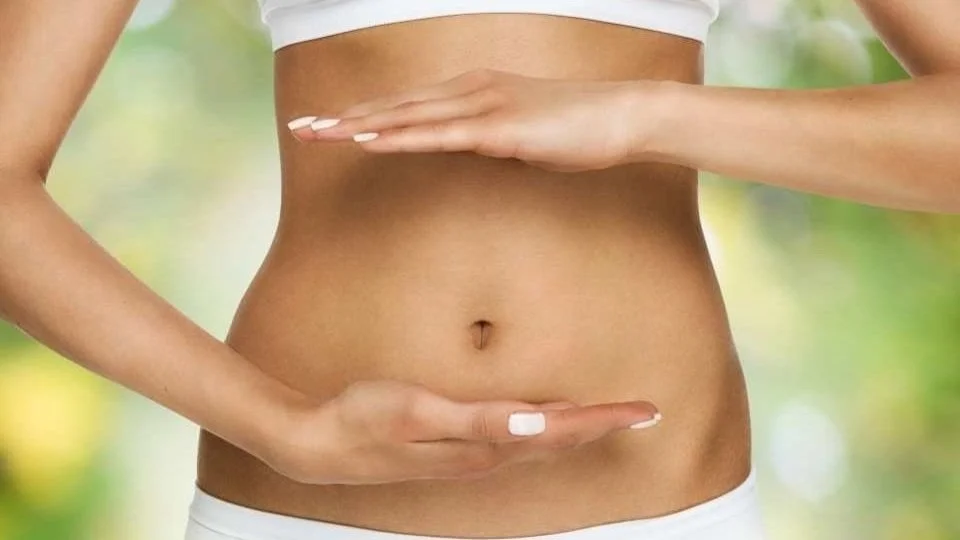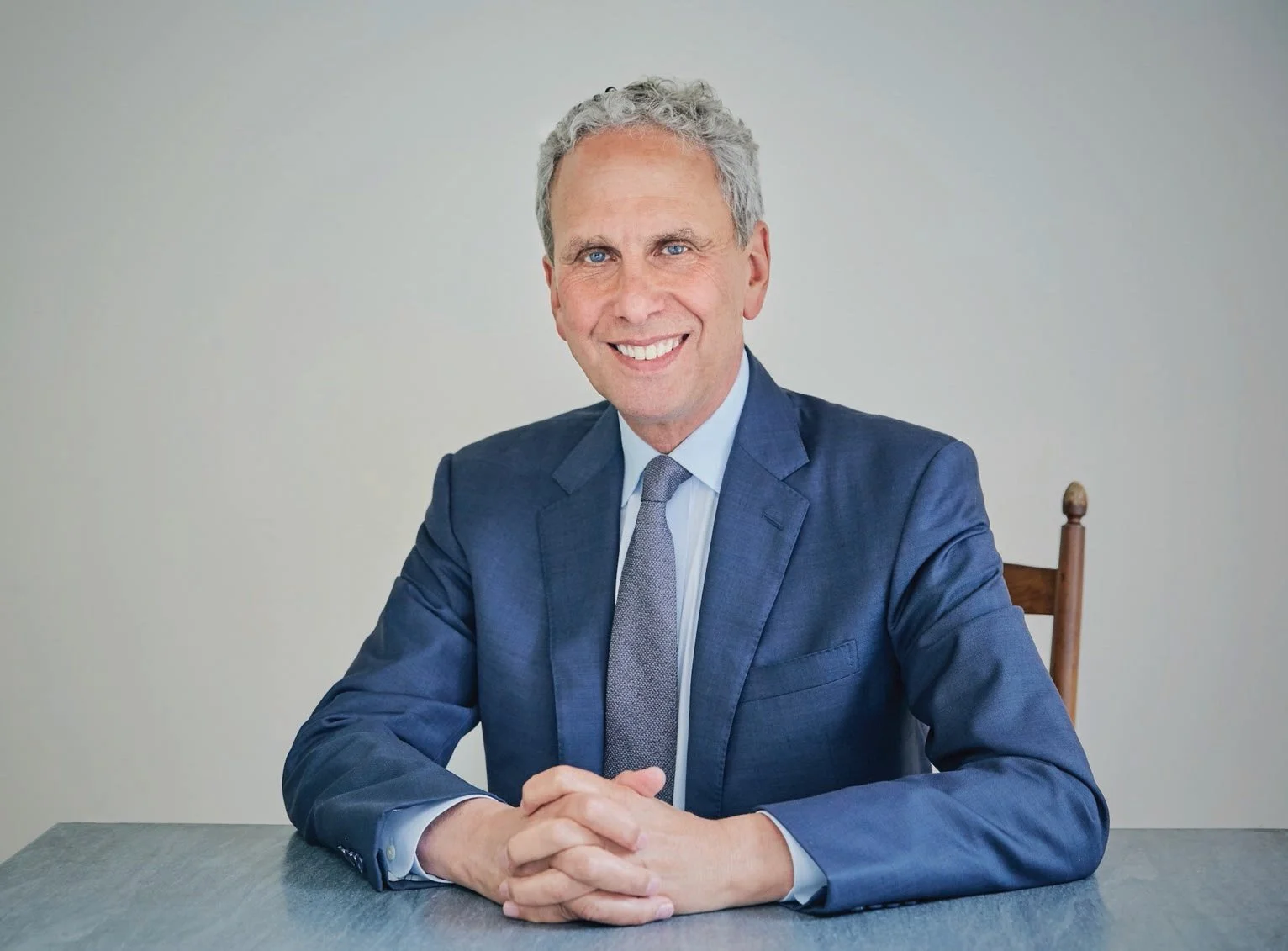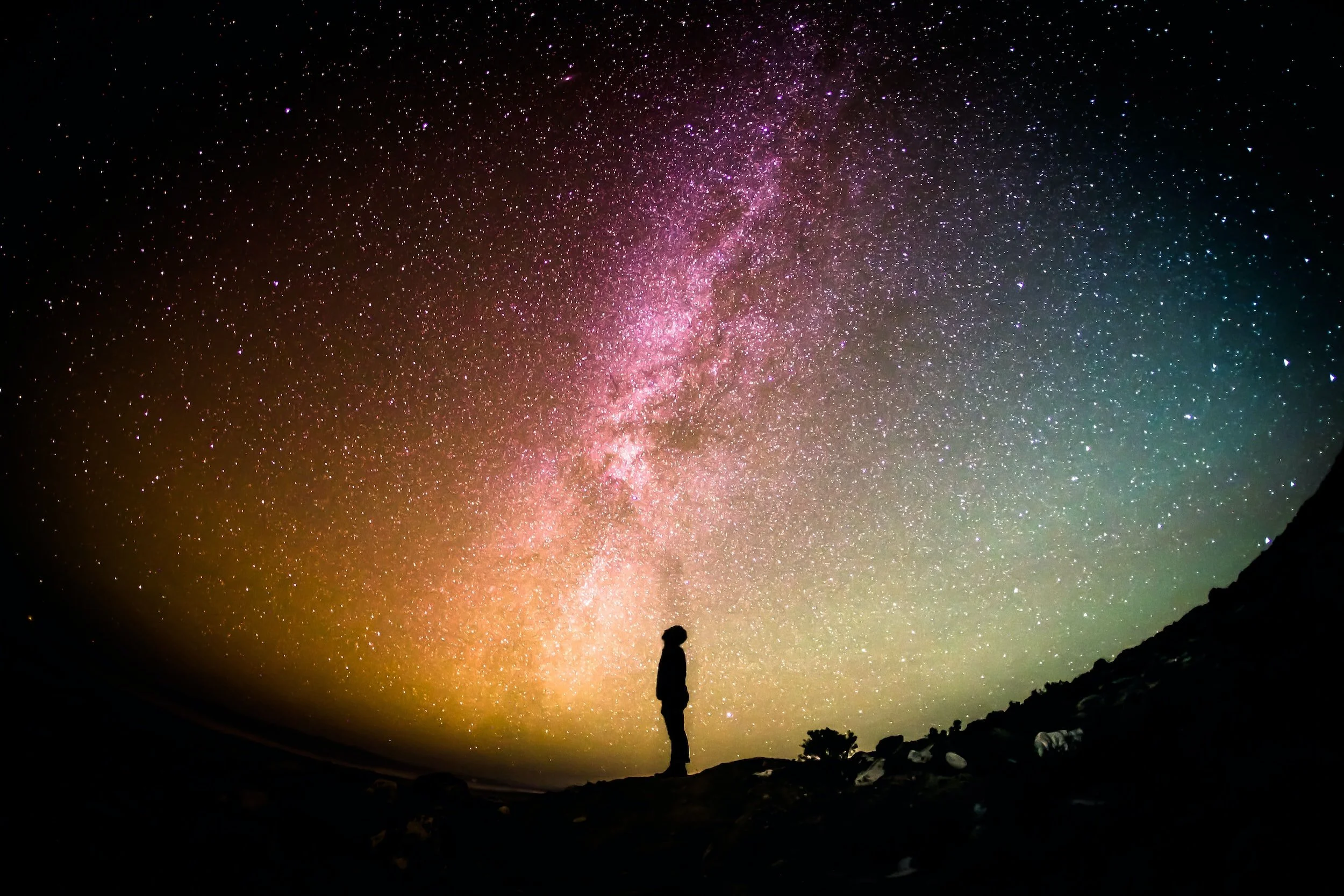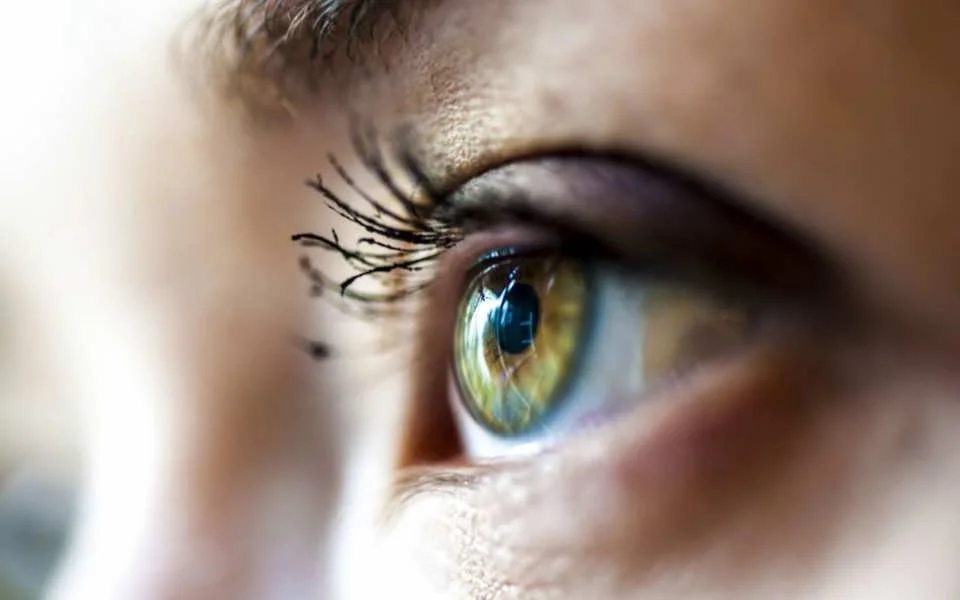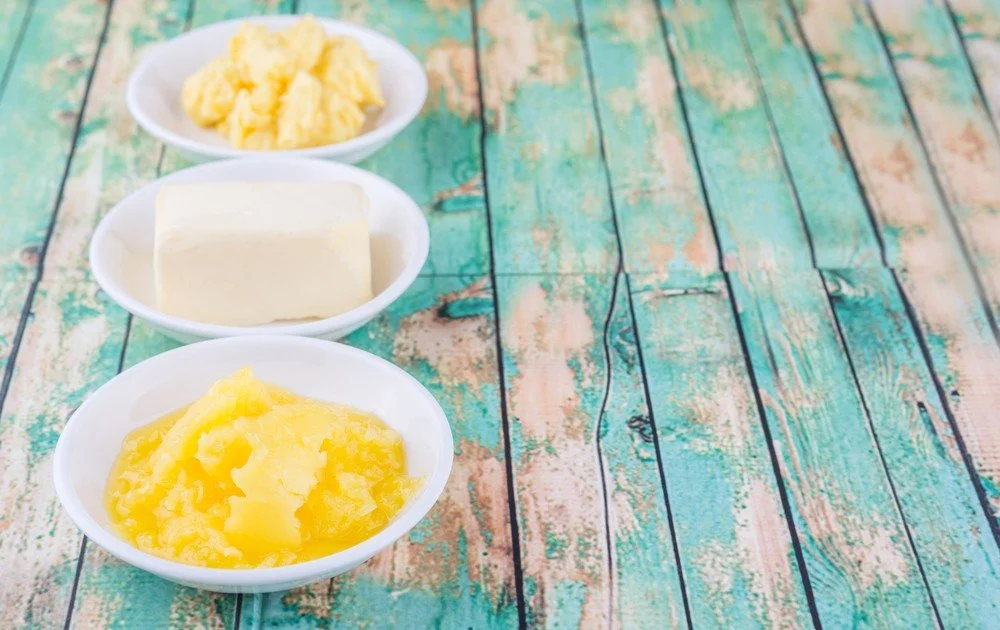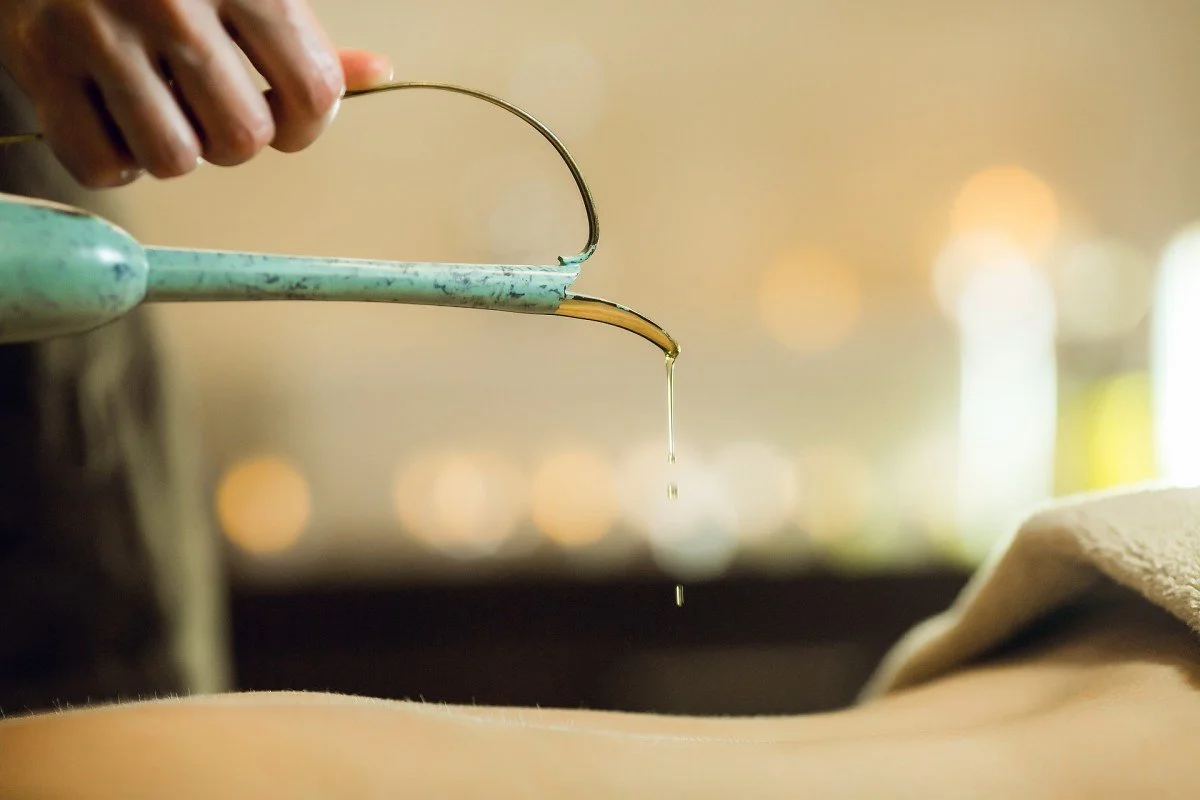Sunlight… Why You Should Avoid It At Your Peril!
A Natural Wisdom Guide to the Importance of Sunlight, Why Getting ‘Too Little’ Midday Sun Can Be Fatal and a More Holistic View of Skin Cancer
This article is an extended version of what appears in Mark’s first book of his ‘Wisdoms of Health’ series: ‘Ancient Wisdom for Modern Health’ – the simple secrets of the world’s healthiest and longest living people
Do you think that the only problem regarding the sun is getting too much…as opposed to too little?
If someone suggested to you that there was good evidence that insufficient exposure to the sun was responsible for more cancers (and a whole host of other serious disease) than too much sun, would you think they were naïve or even crazy?
Despite a growing fear, the sun is not out to KILL US!
Healthy (safe) sun exposure is actually one of our greatest allies in protecting our health. While too much sun is no doubt harmful, in the right amount at the right times (not when you may think), and with an appropriate diet and lifestyle, sun exposure alone does not causes skin cancer. In fact, in the right amount and frequency it protects us from many cancers and much disease.
THIS ARTICLE OUTLINES;
Why we all need regular direct sun contact & why many people need more not less
Why our risk of skin cancer is not just about avoiding the sun (too little can increase risk)
Why we must get ‘some’ sun exposure when we’re usually told not to – around midday
How some sunscreens may ‘increase’ our risk of skin cancer – and what you can do
10 ideas to optimising your sun health while minimising your skin cancer & disease risk
* The article is quite extensive. If you just want the basics (to save time), simply scroll down and read the highlighted parts.
** Note: UV refers to general ultraviolet radiation from the sun. However, generally speaking, only UVB radiation produces health promoting vitamin D and UVA is more closely linked to increased skin cancer (melanoma) risk.
WHY WE NEED REGULAR SUN EXPOSURE & THE PROBLEM OF VITAMIN D DEFICIENCY:
Our bodies need sunlight to manufacture the all-important Vitamin D. Vitamin D plays a major role in all our vital bodily functions. These include gene expression, cell replication, calcium absorption and bone health, as well as the regulation of our immune system (immune system T cells do not become active without sufficient vitamin D). Direct sunlight exposure assists us in fighting infections and stimulates our brain chemistry to elevate our mood. It also helps regulate our internal body clock and even promotes balanced weight management through its effects on metabolic and thyroid functions.
In times past, and indeed up until just a few decades ago, most humans had significant direct exposure to sunlight each day. Most ancient cultures honoured the sun and knew that daily connection to the source of life itself was critical to a healthy life. Today, with our busier ‘indoor’ lifestyles, many of us get up and go to work before the sun has much strength, work indoors all day and come home when the sun is setting. Add in a growing fear of skin cancer and even if we do go out in the sun, we cloak ourselves in sun-shielding clothing or smother ourselves in sunscreen. Apart from labourers and outside workers, the daily direct sunlight exposure for many people is often barely a few minutes. For those who work indoors and don’t go outside for lunch, sometimes it is none at all.
While we have received wonderful education from authorities about the dangers of skin cancer, an unfortunate consequence seems to be that many people are actually getting insufficient sun contact and are subjecting themselves to significant vitamin D deficiency. Even in sun drenched Australia, vitamin D deficiency is far more common than most people believe. Mild deficiency can range up to 50% of the general population (particularly by the end of winter).1 2 This can rise to 80% in at risk populations such as veiled, dark skinned pregnant women3, and elderly or infirm residents who spend most of their time indoors.4
In the four years I’ve known about this problem, and have recommended clients and friends get their vitamin D levels tested, less than a handful have come back with levels in the standard range, let alone the optimal range. Many people in the southern states of Australia (less UVB sun exposure) have had vitamin D levels less than one quarter of the recommended levels. While things are improving, with the increased awareness of the risks of excessive sun exposure (which is good), the potential dangers of vitamin D deficiency have still not penetrated mainstream consciousness.
THE DANGERS OF VITAMIN D DEFICIENCY:
The overwhelming majority of research and research institutions around the world, clearly associate vitamin D deficiency with a number of serious diseases. These include;
Osteoporosis – Poor Bone Health5 6
Heart disease6 9
Depression – Chronic Fatigue / Seasonal Affective Disorder7 8
Auto-immune disease such as rheumatoid arthritis10, type 1 diabetes6 9, ulcerative colitis11 and multiple sclerosis12 13
Cancers: Breast14 15, Colon14 16 17, Prostate14 18 19 plus 11 others14
Vitamin D deficiency has been reported to be associated with increased risk of various cancers in prestigious journals such as Cancer and by the US National Institutes of Health.20 21
In March 2002, one of the world’s most prominent and respected vitamin D researchers, Dr William.B.Grant, published studies correlating the part of sunlight that helps us manufacture vitamin D (UVB) and cancer mortality rates in Caucasian Americans. Dr Grant showed inverse correlations for a total of 14 different types of cancers. That is, as UVB sunlight exposure went down, death rate from cancer went up. These cancers included many common ones such as breast, colon, non-Hodgkin’s lymphoma, and ovarian cancer. Other cancer risk-modifying factors, such as smoking or alcohol consumption, did not detract from this link.
From this and other research it is estimated that anywhere between 20,000 and 50,000 – 60,000 cancer deaths annually in the US can be considered premature due to insufficient UVB irradiance and vitamin D (many more people are diagnosed with cancer each year for the same reasons).22 23 24 25 While latitudinal variations between parts of the US and Australia may account for some differences in the extent of vitamin D deficiency here, clearly the dangers of such deficiencies are widespread and serious.“Vitamin D deficiency is the single most important dietary deficiency in the world today. It has already been linked to prostate cancer, colon cancer and breast cancer. After almost 35 years of increases in allergic and autoimmune disease, we are beginning to understand the causes of the epidemic”.
– Harvard Medical School, Respiratory, Environmental and Genetic Epidemiology, Channing Laboratory
* Authors Note: In most countries, including most parts of Australia, Vitamin D is not really a ‘dietary’ deficiency at all – it is a deficiency of safe, sun exposure.
SKIN CANCER – IS THE SUN ALONE REALLY THE CULPRIT?
As the main reason we are generally wary of exposing ourselves directly to the sun is due to a fear of skin cancer (or general sun damage, including wrinkling), it’s worth looking at this in a little detail. Right from the outset, I would like to say that I believe that the conventional advice to avoid sunning ourselves to such an extent that we burn our skin is absolutely good advice. Excessive sun exposure can not only damage our skin but destroys vitamin D. It is certainly to be avoided. However, if sun exposure alone increases our risk of skin cancer, some perplexing issues present themselves;
i) despite massive slip, slop, slap type awareness campaigns and people avoiding the midday sun more and more, skin cancer rates are still at all-time highs.
ii) the rates of malignant melanoma (the most harmful form of skin cancer) in fair skinned indoor workers have been rising steadily and exponentially since 194026, while outdoor workers who often spend day after day in the sun, often without any protection, do not have an increasing rate of melanoma (and many never get skin cancer).
iii) according to Michael F. Holick, MD, PhD, from the Boston University School of Medicine and one of the world’s foremost experts on skin cancer, melanomas rarely occur on the face and hands – the parts of the body that get the most direct sunlight exposure, but are actually more prominent on areas such as the legs, back and torso – places that are shielded from the sun most of the time and get the least amount of sun exposure.27
At the very least, something does not seem to add up here. Even accepting arguments based on ozone depletion, differing skin pigmentation or problems of migration (the skin of the Aborigine is certainly more favourable for the Australian sun than English skin types conditioned from hardly ever even seeing the sun!), it seems odd that what was once known to be essential for every aspect of human health, should suddenly be the sole cause of skin cancer.
COULD PROPER (SAFE) SUN EXPOSURE PROTECT US FROM CANCER AND DISEASE?
When we are exposed to sunlight, our bodies produce substances such as melanin that protect our skin. Melanin is like our own natural sun screen. We, however, are commonly told to avoid the sun, stay indoors or completely cover up in the middle of the day because it increases our risk of melanoma, the most deadly form of skin cancer. This is despite the fact that melanomas occur least on the parts of our body that get the most sun (as mentioned they are more prominent on areas that are shielded from the sun most of the time. Even if this anomaly was due to melanomas spreading, illness tends to manifest in the weakest part of our bodies – the weakest link in the chain analogy. Why are the least exposed areas our weakest links? Could it be that in the right amount, the sun actually protects us?
If you go to the gym once every three months, your muscles will likely get sore and ache the next day as they are not prepared for what you’re exposing them to. If however, you expose your muscles to moderate weight training on most days of the week, they will adapt accordingly. They will tolerate more and more weight, without any adverse side-effects. If you go to high altitude area once every few weeks your respiratory system will struggle each time. But if you gradually move to higher altitudes over a period of weeks or months you will breathe quite comfortably even at relatively high altitudes. It is exactly the same with sun exposure.
Our skin cells, like all our other body cells, have an innate intelligence. When they receive moderate sunlight exposures regularly over time, they adapt by building up the appropriate pigmentation and biochemical defences. Additionally, when we get regular exposures to UVB sunlight, we optimise our vitamin D level which further assists our bodies to resist illness over time. With adequate vitamin D and appropriate skin defences, even if we were to get too much sun on a particular day, our bodies will generally have the ability to counteract any damage before it becomes hazardous. Small, safe, regular exposures of sunlight provide us with far more protection than does wrapping ourselves up in cotton wool for five days a week and then going out on the weekend and getting even moderate sun exposure. This is of course what many of us, particularly office workers, do.
Research shows people who work indoors and then go out in the sun on weekends are one of the highest risk groups for skin cancer. We are more likely to get sunburnt this way and this has been linked to increased melanoma rates.28 Such a sporadic method of sun exposure subjects our skin cells to more damage, and a greater propensity to replicate (become pre-cancerous or cancerous), due to a reduced vitamin D level. According to a 2009 study abstract from the US Food and Drug Administration, Center for Devices and Radiological Health, indoor workers get three to nine times less solar UV exposure than outdoor workers, yet have an increasing incidence of melanoma whereas outdoor workers do not.30 Let’s repeat that. Those who stay indoors for large parts of the day and get significantly less UV exposure, have an increasing risk of melanoma. It is hypothesised that the reason for this is due to indoor workers having low levels of vitamin D in their skin (low UVB sunlight exposure) as well as having increased UVA exposure. UVA can pass through windows and break down vitamin D.
Avoiding the sun, staying indoors (like working all day indoors) or blocking sunlight exposure is certainly no way to avoid skin cancer or ensure optimal health.
Most research, as well as our own intuitive wisdom and the highest sources of knowledge in time-tested natural health sciences – suggest that regular, SAFE sunlight exposures actually protect us from (skin) cancer.
NAKED AT NOON – WHY WE SHOULDN’T COMPLETELY AVOID THE MIDDLE OF THE DAY SUN:
This brings us to arguably the most important point of the whole sunning issue. Although we are commonly told to avoid the middle of the day sun (which is completely well intentioned and understandable based on the fact that total UV exposure is highest at this time), by doing so we prevent ourselves from manufacturing vitamin D in any significant amount. From around 10.00am – 3.00pm (in most Australian locations in summer) is the only time vitamin D producing UVB rays are present (more in a moment).
In Ayurveda, (the natural health science I was trained in), the sun is known to impart different physiological and psychological effects at different times of the day. The morning sun in particular is known to bestow an unprecedented n umber of health benefits. In terms of elevating our mood and enlivening the various physiological functions, the morning sun is considered highly beneficial. Exposure to the early morning sun is known to stimulate us mentally and emotionally and play a key role in regulating our internal cycles and hormonal balance (similar to what modern science understands as circadian rhythms). Without morning sun exposure our individual alignment with the universal, daily cycles can be disrupted resulting in imbalances such as daytime lethargy, depression and even difficulty getting to sleep at night.
It is good to appreciate however, that these benefits relate to the more generalised, cosmic effects of the sun and the cycles of light and dark. They are quite different from the effects of sunlight directly contacting our skin in order to synthesise vitamin D. Of critical importance here, is the fact that all UV radiation is not the same. UVA (which is associated with increased melanoma risk) is equally present from dawn to dusk in both summer and winter. Vitamin D promoting UVB however, is present depending on the angle of the sun. The more directly overhead the sun is, the greater the presence of UVB. Thus, in the early morning, late afternoon and in winter, the UVB part of sunlight, and therefore the production of vitamin D, is so low as to be ineffectual in most locations.
Back in 2008, a group of Norwegian researchers from the Institute for Cancer Research in Oslo concluded their study on sunlight exposure and skin cancer by saying, ‘To get an optimal vitamin D supplement from the sun at a minimal risk of the deadliest form of skin cancer (CMM) the best time of sun exposure is noon. Common health recommendations given by authorities in many countries, that sun exposure should be avoided for 3-5 hours around noon and postponed to the afternoon, may be wrong and may even promote CMM’ (cutaneous malignant melanoma – i.e. skin cancer).31
Krispin Sullivan, a pioneer in this field for many years and author of the internationally respected book, Naked at Noon32, further supports this view. The premise of her book based on her extensive research is that for the purposes of optimising our vitamin D status and thus maximising our protection against the many cancers and other serious diseases vitamin D insufficiency is associated with, we need to get a certain amount of sun exposure (though certainly not too much) – in the middle of the day. Such recommendations are supported by many other eminent vitamin D and skin cancer experts such as Dr’s. Grant and Holick mentioned previously.
Getting direct sun exposure to large surfaces of one’s skin in the early morning or late afternoon hours without sufficient exposure to the midday sun is actually more likely to promote skin cancer (because we get UVA exposure without any significant protective UVB exposure). We obviously have to be more careful of avoiding overexposure in the midde of the day because the total UV exposure is greatest. However, it is also the best time to get maximum vitamin D. Some experts who understand that middle of the day sun exposure is the only way we can manufacture our own vitamin D, often recommend that our sunning times be around 10.00am or 3.00pm. This is certainly safer in terms of minimising the risks of overexposure, however it does mean improving one’s vitamin D status can take a long time. It is commonly suggested that it can take up to 12 or 18 months for those who are vitamin D deficient to have their levels restored to normal. This is fundamentally because people are getting their sun exposure in the less than ideal times. When people get shorter exposures closer to midday, improvements are far more rapid.
A subscriber of mine, e-mailed me recently with some personal experiences that really bring home the importance that it is safe, midday exposures (rather than mid-morning or mid-afternoon) that bring the best results. She wrote, “Hi Mark, my lifestyle meant that I was missing out on a lot of sunshine (working in an office in front of a computer till all hours of the night 7 days a week). As a result, I found my general health was suffering. If I caught a cold or the flu it seemed to hang around for months at a time. My immune system was simply not working for me. I went to an endocrinologist where among other things it was discovered that I had very low Vitamin D levels. For 5 months I’ve been taking supplements but I have also been spending 20 minutes, where possible in the midday sun on the weekends. It seems that my vitamin D levels are already coming good – which the endocrinologist was most surprised by as she said it usually takes 12 – 18 months for this to work.
I also had a stress related skin disorder some 3 years ago and one of the steps I had to take to assist with the clearing up of the rash was to expose the rash to the sunlight for up to 30 minutes. I reported back that I had done that – at 10:30am – and there wasn’t much improvement. The doctor said I had to do it in the MIDDAY sun and the improvement was almost miraculous.
* People with things like eczema and psoriasis can also receive wonderful benefits from short, midday sun exposures to the affected areas. Back in the mid 1990’s I used to get some eczema on my forearms each year. I finally realised that instead of using cortisone creams, by rolling up my sleeves and getting some summer sun, it would vanish within days.
In short, safe sunning involves being in the sun for a period before any skin damage from UVA occurs but at times of the day that maximise UVB. I.e. get your exposure in the middle of the day but don’t stay too long*. In the northern parts of Australia, UVB exposures are present for longer periods of the day. However, at latitudes between 30-50 degrees (this is basically everywhere below the bottom of Queensland), the morning and late afternoon sun provides UVA with minimal UVB.
* The exact time of day and duration for optimal (safe) vitamin D sun exposure depends on the location (latitude) and time of the year. These are covered in the suggestions section but generally include the hours between 10.00am and 3.00pm for periods ranging from just a few minutes to as much as two hours, depending on skin type.
NUTRITION – AN OVERLOOKED FACTOR:
Our skin renews itself every few weeks and is a living, breathing organ. Although we tend to gloss over the fact that ‘we are what we eat’, literally, the health of our skin cells, immune system cells, and our bodies’ generally are fundamentally made from the food we eat. We all know that when we eat too much rubbish our skin looks rubbish. While sunburn is not a good thing, whether such damage to our skin cells leads to something like cancer cannot be independent of the levels of cancer fighting antioxidants and disease neutralising phytochemicals in our bodies. These of course are entirely dependent upon what we put in our mouths! Simply put, a high intelligence, whole food diet of fresh, antioxidant-rich fruits, vegetables and wholegrains will deliver significantly greater protection than a diet of old, lifeless, nutrition-depleted food (i.e. what many people today live on).
While this idea may seem novel, it has been reported that some years ago the President of the US Dermatological Society said that skin cancer is not caused by the sun but is due to insufficient fruits and vegetables in one’s diet. Though not the only factor involved, it is interesting to note the close correlation between the increasing rates of skin cancer over recent decades and the increasing numbers of people consuming predominantly unintelligent (processed, refined, unnatural) foods. The increased consumption of processed vegetable oils (such as in margarines and salad dressings) and the increase in melanoma rates over the last 30 years are almost identical and are suspected to be correlated due to the fact that polyunsaturated fats are easily damaged by UV radiation when incorporated into skin cells.
SUNSCREENS – HELP OR HARM:
Though we commonly think of sunscreens as protecting us from skin cancer, more and more recent research is questioning this assumption. Growing research is now suggesting that artificial, chemical-based sunscreens can be toxic and may promote their own problems, including the possibility of increasing skin cancer causation itself.33
Dr Peter Dingle, a leading Australian toxicologist, presents a comprehensive overview of the dangers of most commercial sunscreens in his article How Toxic Is Your Sunscreen? Toxic Sunscreen Ingredients Exposed. For example, he explains that UVA absorbers (what sunscreens use to block the UVA rays) have a high level of instability and when exposed to sunlight they begin to produce free radicals. These free radicals can cause DNA damage, which can result in a range of ill effects from premature skin aging to cancer. To read the full article go to https://drdingle.com/docs/sunsreens_final1.pdf
To be fair, many other bodies, including the Cancer Council, question this growing research (though as they promote them we should expect them to defend them). Either way, whether science eventually proves beyond doubt that chemical sunscreens contribute to skin cancer or not, from a natural health science perspective they are certainly not ideal. The reason is that our skin is highly porous. The reason things like moisturisers and nicotine patches work is because of the fact that what goes on our skin, can go in our body. Most sunscreens do not simply sit on top of the skin and studies have shown that chemicals in sunscreens can penetrate into our blood and urine, as well as disrupt our natural hormone functioning.34 Laboratory made, synthetic chemicals are unrecognisable to our bodies, and thus can interfere with the subtle intelligence that runs our cellular processes. Products designed to sit on top of our skin are likely to block the subtle channels in the skin. Long-standing natural health sciences understand that blocking these subtle channels can greatly compromise our skins ability to eliminate harmful toxins and over time compromises the intelligent functioning of surrounding tissues. In Ayurveda for example, cancer of any type is seen as ‘a loss of intelligence’ within the affected cells. If we regularly block the subtle channels (through which our bodies intelligence flows) we must eventually increase the possibility of compromised functioning and potentially illness.
The good news is that debating the safety of chemical sunscreens is no longer really necessary. While staying out of the sun or using clothing to protect against excessive sun exposure is best, good quality natural sunscreens are now readily available. These sunscreens are made with plant-based ingredients rather than synthetic chemicals and can block UVA to the same degree as chemical-based ones do (see the Suggestions section for specific recommendations).
* In addition to diet, total sun exposure and lack of vitamin D, other primary reasons for increase in basal and squamous cell cancers (skin cancers) are known to include insufficient vitamin A and the use of chemical soaps, shampoos, lotions on the skin. These include sodium laurel sulphate and similar detergents which destroy the stratum corneum, the outermost layer of the epidermis or skin.
Hopefully seeing our skin health from a more holistic perspective, we can now look at what we might be able to do to ensure our optimal sun health.
IDEAS TO HELP:
Heart disease has been strongly associated with things like high cholesterol, salt and fat intakes over the last few decades. As such, many people have come to see these things as being ‘bad’ and have gone to extreme lengths to eradicate them almost completely from their diet. However, cholesterol, salt and fat are all absolutely essential to life and are critical for us to enjoy the highest levels of health. While we shouldn’t eat too much of them, people who avoid them simply develop different health problems from those who overeat them. It is the same case with sun exposure. Sure too much is not healthy, but neither is not enough.
While most of our current sun smart advice is excellent and we should really sympathise with scientific authorities that have to try and warn people against the dangers of excessive sun exposure, we also need to be careful we don’t go too far in the direction of sun avoidance. The following are some suggestions based on a middle ground (using the latest modern research) where we can as best we can, optimise our vitamin D protection while minimising our risk of skin cancer.
1. Get tested:
Rather than hypothesise about your vitamin D status, if you haven’t done so recently, get a blood test to assess your vitamin D level (‘serum 25 OH’ or ‘hydroxyvitamin D3’). Knowing this could literally save your life and is the first step to determining your vitamin D health.
Based on the latest research, experts such as Dr Grant now suggest that optimal vitamin D levels are probably in the range of 100 – 150 nmol/L (this equates to 40-60 nm in US figures).34 35 36 While these are higher than proposed by some experts (80nmol/L is often considered okay), if you are significantly below these levels, taking immediate action would be highly recommended.
2. Inform others:
If you know someone with any form of cancer, osteoporosis or bone disease, an autoimmune disease such as type I diabetes, multiple sclerosis, rheumatoid arthritis, ulcerative colitis, or who is dark skinned, veiled, elderly or live/work predominantly indoors, you may want to inform them of the latest information on vitamin D and suggest that they have their own blood levels assessed (if they haven’t done so recently).
* Understandably, due to their own extensive time demands, some doctors are not yet aware of the extent of vitamin D deficiency or are so busy with other areas of patient care they may overlook it. So you/they may need to ask for a vitamin D blood test.
3. Focus on getting Regular, safe sunlight exposure whenever appropriate:
i) Use the Shadow Rule – Get Sun Exposure in the ‘Middle’ of the Day (in Warmer Months):
In order to get sun exposure for optimal vitamin D synthesis, use the shadow rule. When your shadow is ‘shorter’ than you are (i.e the sun is more directly overhead), expose as much skin as you can for the appropriate time period. If your shadow is longer than you are, avoid exposing large areas of your skin to direct sunlight for extended periods. This is the case in the early morning, late afternoon and throughout late autumn and winter for most places in Australia. Northern areas of Australia will still allow vitamin D production during parts of winter and at times other than just the middle of the day (please don’t use this as a reason to dislike Queenslanders!). Southern states have more limited yearly exposure times.
* Note: The above times are exactly when many experts say not to go out in the sun. However, it should only be done in line with point ii) below. I.e under no circumstances should this be taken as a recommendation to go out in the middle of the day sun for extended periods.
ii) Get the Appropriate Level of Exposure for YOU:
The appropriate time for optimal sun exposure varies greatly depending on a range of factors, for example:
your skin colour/type – the darker your skin the more exposure you need
your age – elderly people tend to manufacture less vitamin D
environmental factors – strength of the sun, clouds, pollution
your diet and genes
The recommendation of the Working Group of the Australian and New Zealand Bone and Mineral Society, Endocrine Society of Australia and Osteoporosis Australia, is ‘exposure of hands, face and arms to one-third of the amount that produces a faint redness of your skin most days’.
This is a most conservative of recommendations and is more focused on apparent safety than optimal vitamin D synthesis. Though we should time our sun exposure to the minimum needed, for optimum vitamin D production, experts such as Krispin Sullivan recommend we should sun ourselves to the point just before the faintest pink colouring. If you ‘pinken’ in 30 minutes, expose yourself for 25 minutes each side of your body. If you ‘pinken’ in 10 minutes, sun for 7 minutes each side. *Be aware the skin colouring can take up to 24 hours after being the sun. Such recommendations are obviously less practical for darker-skinned people, however insufficient sun exposure is usually far more of a problem (vitamin D deficiency) than overexposure.
It is again emphasised that more is definitely not better. Sunning to the point of colouring or pinkening the skin destroys vitamin D and can harm skin cells. Get your vitamin D when UVB is most present, but don’t burn or even quickly colour your skin.
iii) Realise that Exposure through Sunscreens and Glass Do Not Count:
Sunscreens with an (8+) high protective factor appear to block vitamin D producing UV rays.37
UVB radiation does not penetrate glass (less than 5% anyway), so exposure to sunshine indoors through a window does not produce vitamin D.38 If you work indoors or spend a lot of time in cars, avoid excessive sun contacting your uncovered skin through windows. Most importantly, be sure to get outside at lunchtime for some direct sun exposure.
4. If your vitamin D levels are low, get naked at noon (sun bath) in summer:
Although the term sun bathing has a negative connotation in the West, obviously the ‘lying on the beach for extended periods of time’ type of sunbathing is not healthy. If your vitamin D levels are low however, focus more diligently on exposing larger areas of your body to the sun via the same safe sunning methods indicated above.
For example, if you work from home, dedicate a few minutes each day to stripping off to your underwear or bathers and connecting with the sun (both your front and your back). If you work in a public space, ensure you get outside at lunchtime and roll up your sleeves, lift up your pant legs or skirt and get some sun. Even change clothes if you need to. Such actions may seem somewhat impractical but remember we are talking about vitamin D deficiency and thus serious, potentially life-threatening conditions. As with any such condition, some disruption to your normal routine may in fact be the most practical thing you can do. Be diligent. It is likely to be small, safe, regular exposures (which most people don’t get), that along with a healthy diet and overall lifestyle that deliver maximum benefits.
5. Sun before supplementing:
Many modern experts recommend treating vitamin D deficiency by consuming specially fortified foods or synthetic supplements (because they are considered safer than the sun). However, Mother Nature designed us to get most of our vitamin D needs via sunlight. Apart from a few foods (mainly fortified ones), Vitamin D is almost exclusively obtained from direct sunlight. Thus, where practical, try and make safe sun exposure your primary source of vitamin D synthesis.
From the perspective of body intelligence discussed earlier, only ‘intelligent foods’ can create an intelligent functioning body. Most fortified foods, for example processed milks, processed cereals and margarines are unnatural foods and thus are not ideal to consume long-term as they compromise our health in other ways. Also, most plant-based fortified food sources of vitamin D generally contain vitamin D2 not vitamin D3. Vitamin D2 is considered far less useful.
Acute Deficiencies:
For those who live in a location that has limited UVB sunlight exposure, who have an acute vitamin D deficiency or simply cannot get sufficient vitamin D, then some type of supplementation may no doubt be necessary. Cod liver oil is commonly recommended as a more natural high vitamin D source, though there is some recent questioning of this based on the high levels of vitamin A that commonly come with cod liver products. Although I don’t like recommending artificial (non-natural food based) supplements*, in the case of serious vitamin D deficiency, most conventional experts highly recommend them, particularly in winter. While recommendations again vary, up to 4000IU a day (others suggest even higher doses) are being suggested, particularly for those with deficiencies.
* Vitamin D is fat soluble, so if you do supplement, especially via synthetic vitamin pills or fish oils, it is critical to have your vitamin D levels checked regularly to avoid toxicity. This is another key benefit of getting our vitamin D as Mother Nature intended. When we get our vitamin D naturally, i.e., from the sun, we can’t overdose or ever have a toxic reaction. This is because Mother Nature has built in to our bodies a self-regulating intelligence that shuts down production once we reach our optimal levels.
6. Use natural rather than synthetic sunscreens:
If you must be in the sun for longer periods than is healthy, then certainly use hats and clothing as recommended by general sun-safe guidelines. In terms of using commonly available chemical sunscreens, do your research into whether you want to be putting them on your skin. If you need to use a sunscreen, make sure it blocks out UVA rays and consider using natural sunscreens. I.e. ones that are ‘free of synthetic chemicals’ and contain naturally occurring ingredients such as green tea, vitamin E and plant-based oils. Many natural sunscreens are now available. I use Soleo Organic and I hear SunClear is also good.
7. Use natural, chemical-free shampoos, soaps and lotions:
E.g. avoid all products with sodium laurel sulphate or similar.
8. Focus on eating more skin-protecting and health-promoting foods:
Plant foods capture and store sun solar energy. The energy we get from eating plants is actually, in essence, stored sun power. Appreciate that our potential for disease (including skin cancers) is not just about what we are exposed to externally, but what defences to disease we create for ourselves on the inside. Eat a predominantly high-intelligence diet of Mother Nature’s disease-prevention foods: fresh, coloured (high antioxidant) fruits and lots of vegetables, particularly green leafy ones. Add in a few treats occasionally of course! Enjoyment is great immune booster too!
9. Learn more:
Read or see;
Krispin Sullivan’s book, Naked at Noon
Dr. Michael Holick’s, The Vitamin D Solution’ and The UV Advantage
https://www.sunarc.org
https://sunlightandvitamind.com
10. Don’t stress about it:
Although this is an important issue, the most important factor for our health is being happy and enjoying life. Get safe, sun exposure as is easy and practical but don’t get so caught up by it that you stop enjoying life. Life and health are meant to be simple. Do the basics but if you miss a few days of sun here or there or even get a little bit too much sun ‘once in a blue moon’, don’t stress.
Remember, no one thing in isolation is likely to guarantee or jeopardise our health. Any healthy or diseased state is due to the combined, collective effect of a multitude of factors.
***
The sun is one of our most precious gifts and dearest friends. Respect its power and avoid ‘overexposure’, but don’t distance yourself from it so much that you can’t accept what it wants to give you: brightness, power, energy, dynamism, emotional wellbeing and physical health
ARTICLE WRITTEN BY MARK BUNN
Mark Bunn is the Founder of Dharmic Living and author of the three-time best-selling ‘Ancient Wisdom for Modern Health‘.
Featured Articles
Topics
- Alcohol 1
- Allergies 1
- AntiInflammatory 2
- Arthritis 1
- Asthma 1
- Atkins 1
- Autumn 1
- Ayurveda 22
- Ayurvedic Medicine 12
- Ayurvedic Science 2
- Bad Breath 1
- Beer 1
- Blood Sugar 1
- Bob Roth 1
- Body Odour 1
- Breakfast 2
- Breathing 1
- Business 2
- Butter 1
- Caffeine 1
- Cancer 6
- Carbohydrates 2
- Cataracts 1
- Charcoal Water 1
- Cholesterol 3
- Coffee 1
- Cold & Flu 1
- Cooking 1
- DR JR Raju 2
- Daily Cycles 2
- Dehydration 2
- Dental 3
- Detox Drinks 1
- Diabetes 1
- Diet & Nutrition 44
- Dieting 2
- Digestion 9
- Direction 1
- Disease 1
- EMF 1
- Earthing 2
- Eastern Medicine 1
- Eating 1
- Eating Out 1
- Exercise 9
- Eye Health 1
- Fish Oil 1
- Flaxseed 1
- Food Quality 2
- Forest Bathing 1


